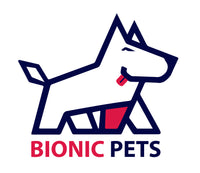
An injury to the cranial cruciate ligament, or CCL, is a common cause of lameness and limping in dogs. The CCL is a ligament that joins the front of the tibia to the back of the femur in dogs— in humans, this ligament is known as the ACL (anterior cruciate ligament).
Dog CCL tears are commonly referred to as "dog ACL injuries" because the term is more universally understood. The CCL plays a crucial role in canine health since it stabilizes the knee joint and holds the tibia in place below the femur.
What happens when your dog has a torn CCL? Can you wrap the dog's hind legs? The short answer is yes. A canine stifle (knee) brace should be used to apply compression as part of your dog's therapy plan. But before you run towards your cabinet, let's look deeper into CCL injuries.
Symptoms of CCL Injuries

If your dog has already suffered a CCL injury, that is not necessarily indicative of future CCL problems, but it does increase the chances of re-injury. Various factors, such as activity level, breed, age, and obesity, can cause dog CCL injuries.
In light of that, the following are some typical signs to watch out for. If you observe any of these, contact your veterinarian right away.
- "Toe touching" or holding the leg up while moving
- Cracking sounds in the leg
- Reduced range of motion and extension
- Sitting with the back leg extended
- Touching the knee joint causes pain
- Lack of interest in exercising
- Stiffness following exercise
- The joint feels thick or firm
- Weights shift when the dog is standing
How to Help a Dog With a Torn CCL
Some dogs, specifically smaller breeds, can potentially recover from the lameness brought on by a partially torn CCL without extensive treatment. However, the absence of a healthy CCL will result in the bones rubbing against one another, which can cause bone spurs to form, pain, arthritis, and a reduction in range of motion. Large to medium-sized dogs are more prone to these issues. Keep in mind that these injuries are painful for your dog, so even if you don't pursue treatment or a brace, please discuss a pain management approach with your veterinarian.
If you suspect your dog has a torn CCL, the first step is to visit the veterinarian. The vet will need to physically examine the affected leg and may recommend X-rays or an MRI. If you have a confirmed diagnosis, the best way to help your dog is to follow the vet's recommendations.
Besides the recommendations from your vet, you can do the following to help your dog recover from a torn CCL:
- Apply ice packs or cold compresses for 15 minutes at a time, three times per day.
- Provide your dog with orthopedic beds and other items that provide support and comfort, like braces.
- Decrease your pup’s activity levels.
- Employ physical therapy techniques, like massage and swimming, to help the dog regain strength in the injured leg. Preferably under the supervision of a therapist.
- Incorporate weight management into your pup’s recovery plan— this will reduce stress on the knee joint.
- Provide a balanced diet that contains all the essential nutrients for recovery.
- Give your dog lots of love—reduced stress levels will benefit recovery.
Yes, you can wrap a torn CCL in your dog— but only with the help of a trained professional and as part of an overall treatment plan. It's important to remember that rehabilitation is key when treating a canine leg injury, so don't leave it to chance! Keeping up with recommended treatments will give your pup the best chance at a full recovery.
Dog Torn CCL Treatment

Depending on the severity of the injury, your dog could either heal with medication and rest, physical therapy, or in more serious cases, surgery.
Non-surgical CCL therapy is usually reserved for dogs under 30 pounds. Treatment entails a period of rest and anti-inflammatory medication, followed by a low-impact exercise program and, in cases of obesity, weight loss.
CCL surgery for dogs aims to stabilize the joint. Depending on the treatment, it may take three to four weeks for your dog to bear weight on the injured limb, and exercise is normally restricted for at least two months to allow for recovery.
Getting Your Dog a Knee Brace

A knee brace is a supportive device that reduces joint instability and provides support and protection while the dog is active. Braces can be custom-made for your pup’s unique needs, although finding the right size and fit can be tricky.
At Bionic Pets, we understand how important mobility is for an animal’s quality of life. We hope that through spreading awareness, community members will be better equipped to assist their pets with mobility issues.
Our custom-made braces are designed to relieve the pain and discomfort associated with torn CCLs, unilateral hip dysplasia, arthritis, ligament ruptures, and other conditions that can affect an animal’s movement. Our orthotic and prosthetic devices are made with the highest-grade materials and designed to fit your pet perfectly, so you know your pup is getting the best possible care.
DIY Guide to How to Make a Dog Knee Brace
How to Help a Dog With a Strained Muscle
How Much does a Prosthetic Leg for a Dog Cost?
How Many Hours a Day Should My Pet Wear a Dog Knee Brace?
